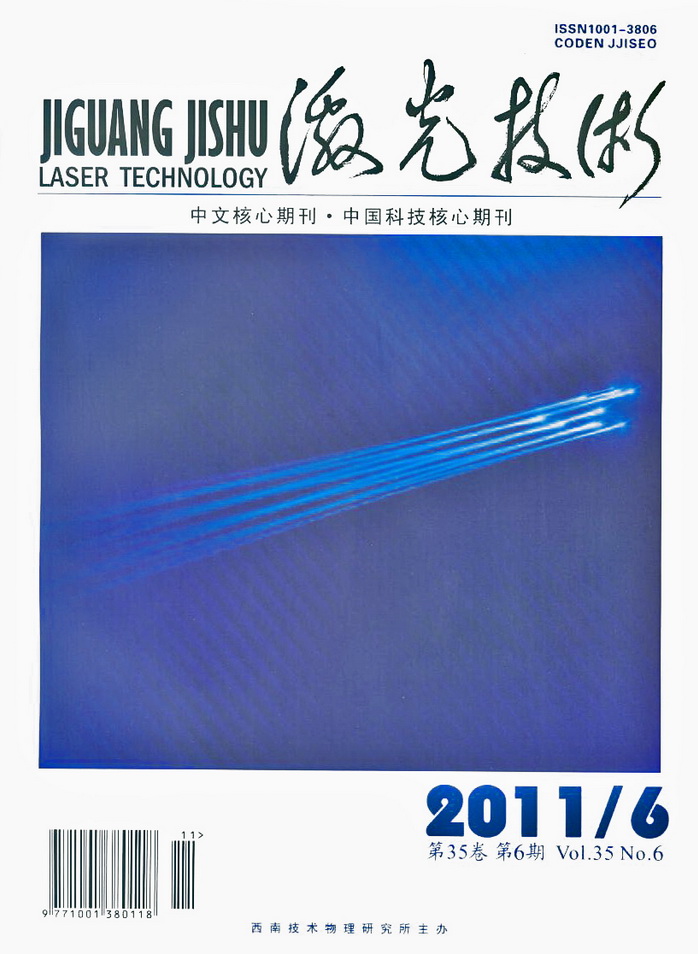|
[1]
|
LIANG J Q.The progress in research micro-opto-electro-mechanical-system[J].OME Information,2000,17(8):1-5(in Chinese). |
|
[2]
|
ZHANG J,HUANG L,WANG D Sh,et al.Study on characteristics of output beam of combined optical diode lasers[J].Laser Technology,2007,31(3):228-231(in Chinese). |
|
[3]
|
ZHAO Y,WANG H L.Properties of 2-D hybrid photonic crystal[J].Laser Technology,2010,34(3):294-296(in Chinese). |
|
[4]
|
ZHOU P,YAN M B,WANG H L.Research of the transmission spectra of photonic crystal waveguide with layered composite medium cylinder[J].Laser Technology,2009,33(2):195-197(in Chinese). |
|
[5]
|
PRINZ V Y,CHEKHOVSKIY A V,PREOBRAZHENSKII V V,et al.A technique for fabricating InGaAs/GaAs nanotubes of precisely controlled lengths[J].Nanotechnology,2002,13(2):231-233. |
|
[6]
|
PRINZ V Y,SELEZNEV V A,GUTAKOVSKY A K,et al.Free-standing and overgrown InGaAs/GaAs nanotubes,nanohelices and their arrays[J].Physica,2000,E6(1/4):828-831. |
|
[7]
|
PRINZ V Y.A new concept in fabricating building blocks for nanoelectronic and nanomechanic devices[J].Microelectronic Engineering,2003,69(2/4):466-475. |
|
[8]
|
LÜ P,GUO X Q,WANG J X,et al.Preparation of nano-Si/SiNx film and its application in passive Q-switch of Nd:YAG laser[J].Laser Technology,2008,32(2):163-165(in Chinese). |
|
[9]
|
HSU V S,KAHN J M,PISTER K S J.MEMS corner cube retroreflectors foe free-space optical communications[D].Berkeley,USA:University of California,1999:11-13. |
|
[10]
|
ZHOU L X,PISTER K S J,KAHN J M.Assembled corner-cube retroreflector quadruplet[C] //The 15th IEEE International Conference on Micro Electro Mechanical Systems.Las Vegas,USA: IEEE,2002:556-559. |
|
[11]
|
HONG Y K,SYMS R R A,PISTER K S J,et al.Corner cube reflectors by surface tension self-assembly[C] //9th IEEE/LEOS Conference on Optical MEMS.Kagawa,Japan:IEEE,2004:2-56. |
|
[12]
|
NIKISHKOV G P,NISHIDATE Y,OHNISHI T,et al.Effect of material anisotropy on the self-positioning of nanostructures[J].Nanotechnology,2004,17(4):1128-1133. |
|
[13]
|
LUO J K,HE J H,FU Y Q,et al.Fabrication and characterization of diamond-like carbon/Ni bimorph normally closed microcages[J].Journal of Micromechanics and Microengineering,2005,15(8):1406-1413. |
|
[14]
|
LUO J K,HUANG R,HE J H,et al.Modelling and fabrication of low operation temperature microcages with a polymer/metal/DLC trilayer structure[J].Sensors and Actuators,2006,A132(1):346-353. |
|
[15]
|
VOROB'EV A,VACCARO P O,KUBOTA K,et al.SiGe/Si microtubes fabricated on a silicon-on-insulator substrate[J].Journal of Physics,2003,D36(17):67-69. |
|
[16]
|
VACCARO P O,KUBOTA K,AIDA T.Strain-driven self-positioning of micromachined structures[J].Applied Physics Letters,2001,78(19):2852-2854. |
|
[17]
|
ARORA W J,NICHOL A J,SMITH H L,et al.Membrane folding to achieve three-dimensional nanostructures:Nanopatterned silicon nitride with stressed chromium hinges[J].Applied Physics Letters,2006,88(5):053108/1-053108/3. |
|
[18]
|
NIKISHKOV G P,KHMYROVA I,RYZHII V.Finite element analysis of self-positioning microstructures and nanostructures[J].Nanotechnology,2003,14(7):820-823. |

 Map
Map



 DownLoad:
DownLoad: